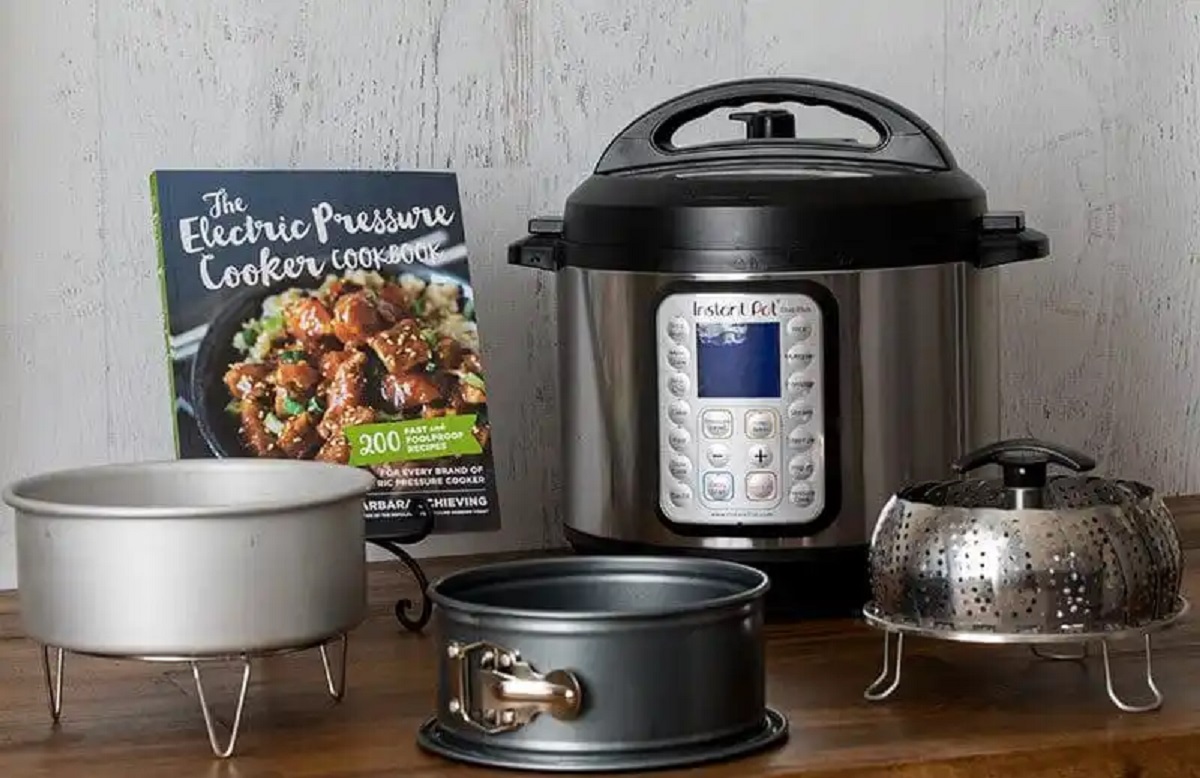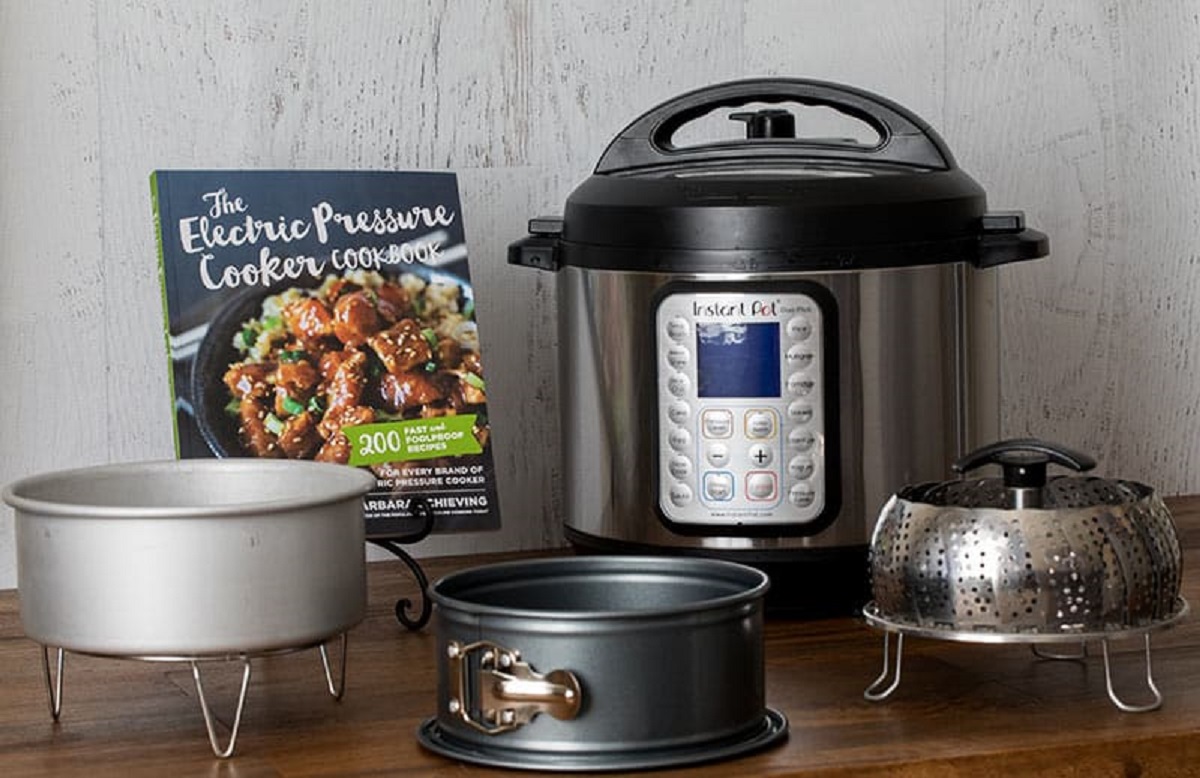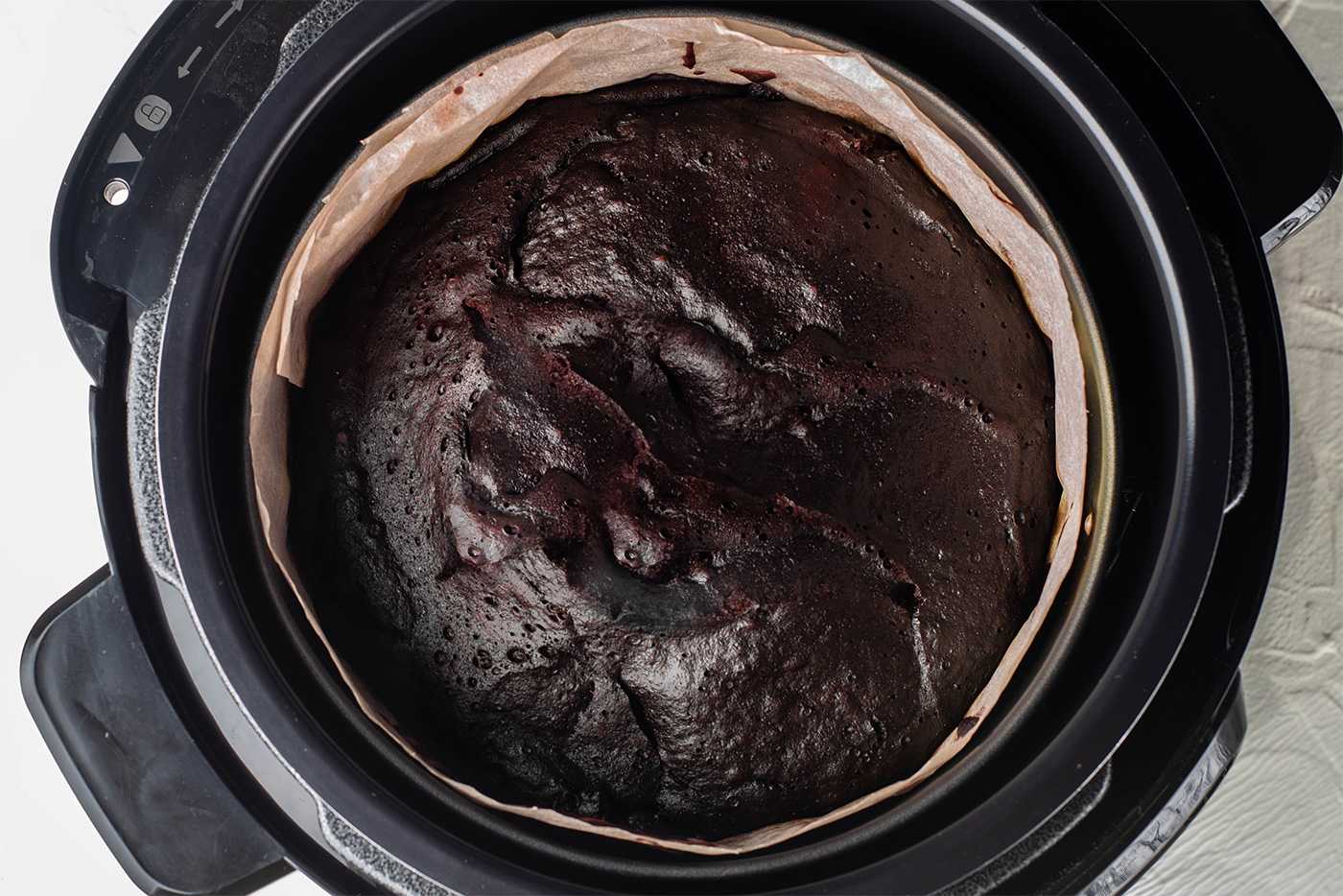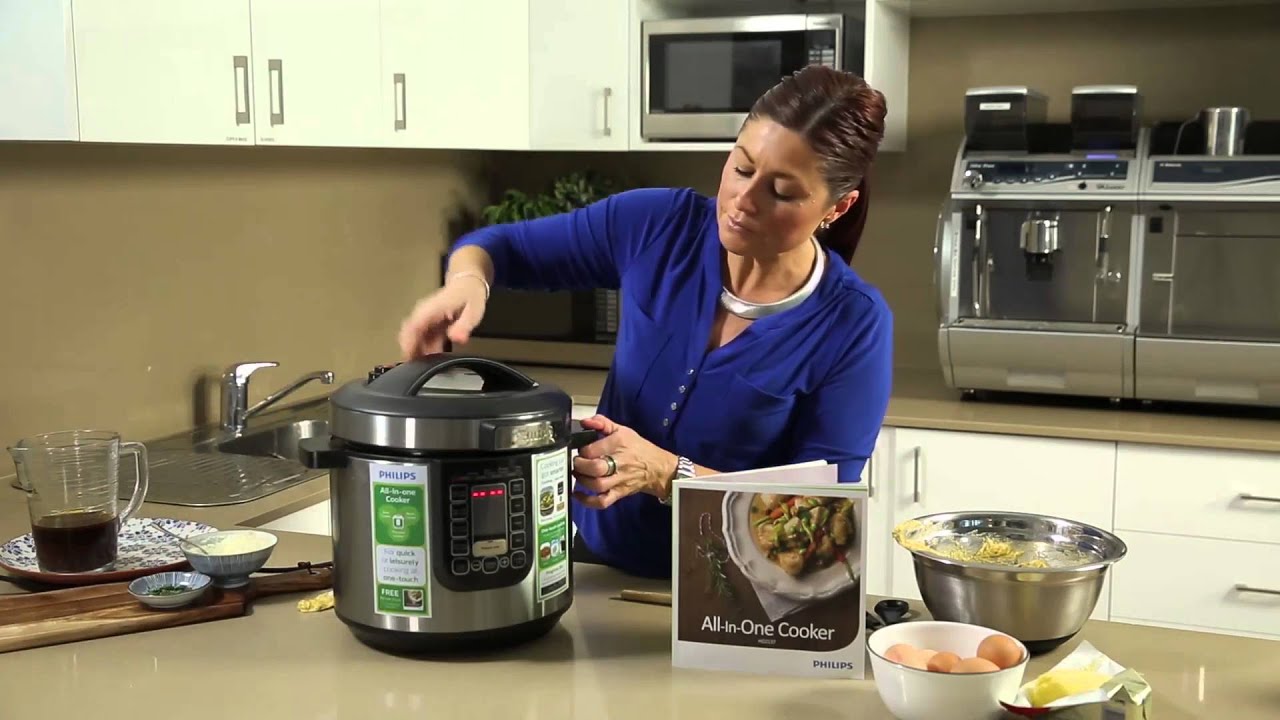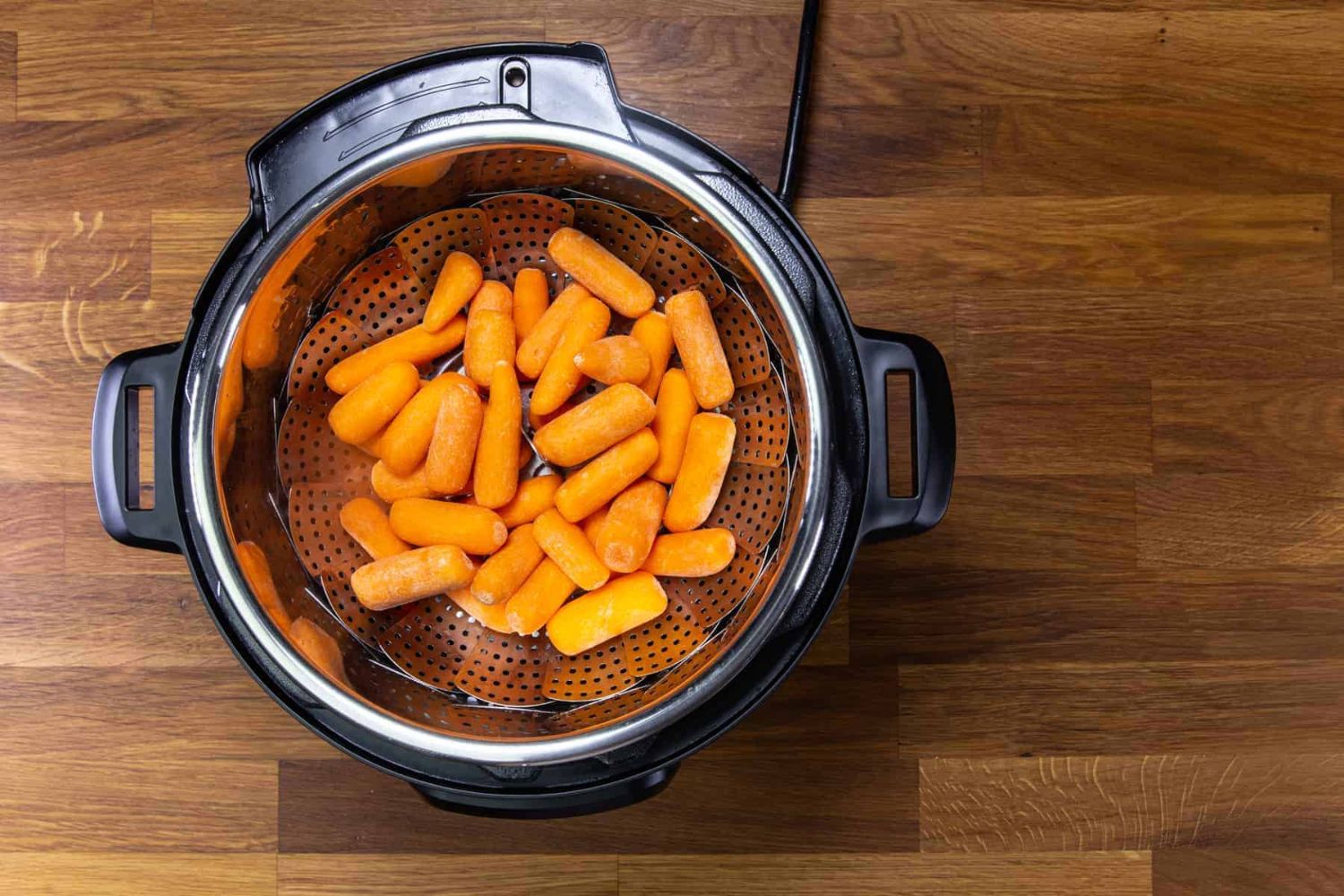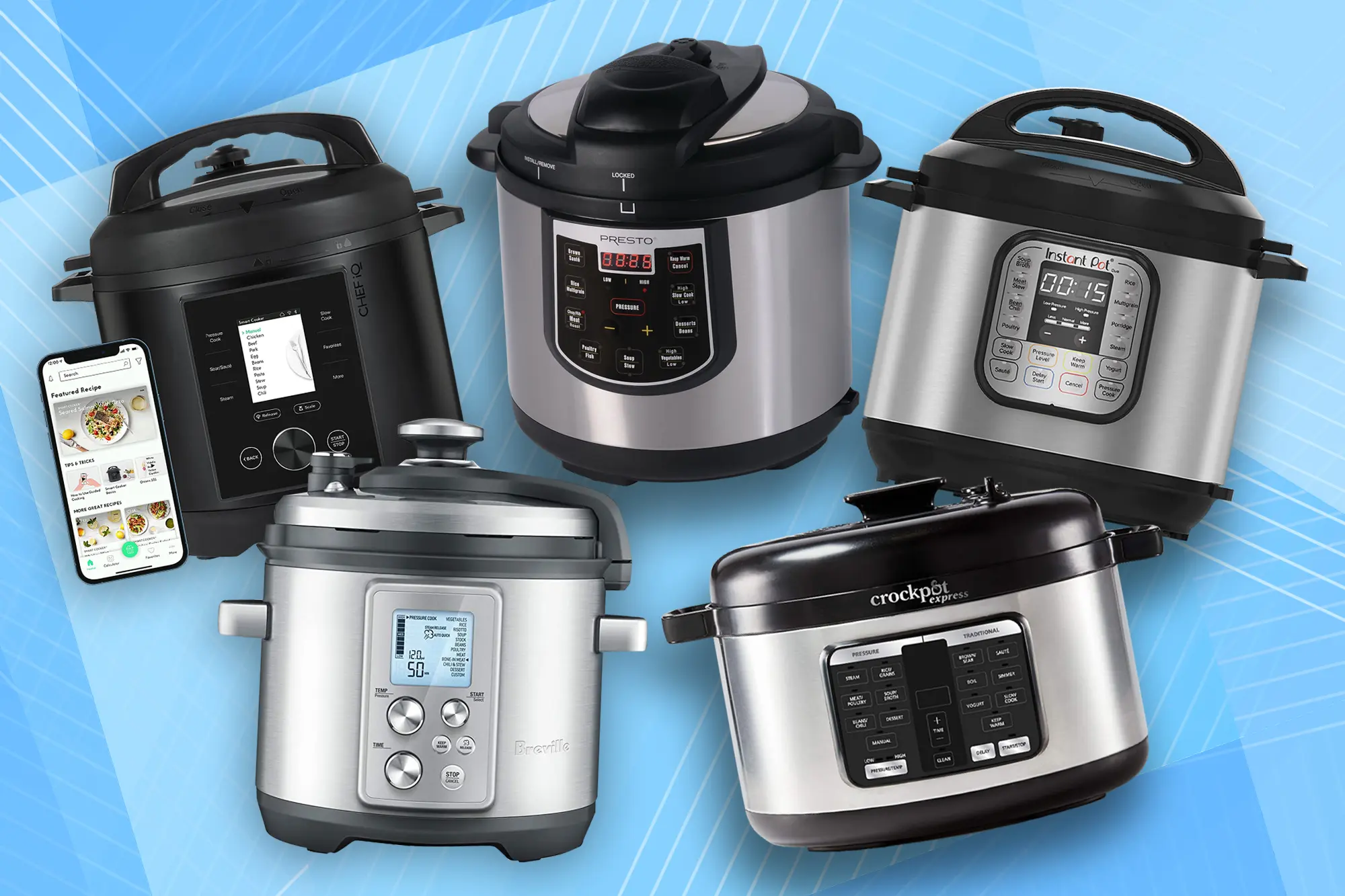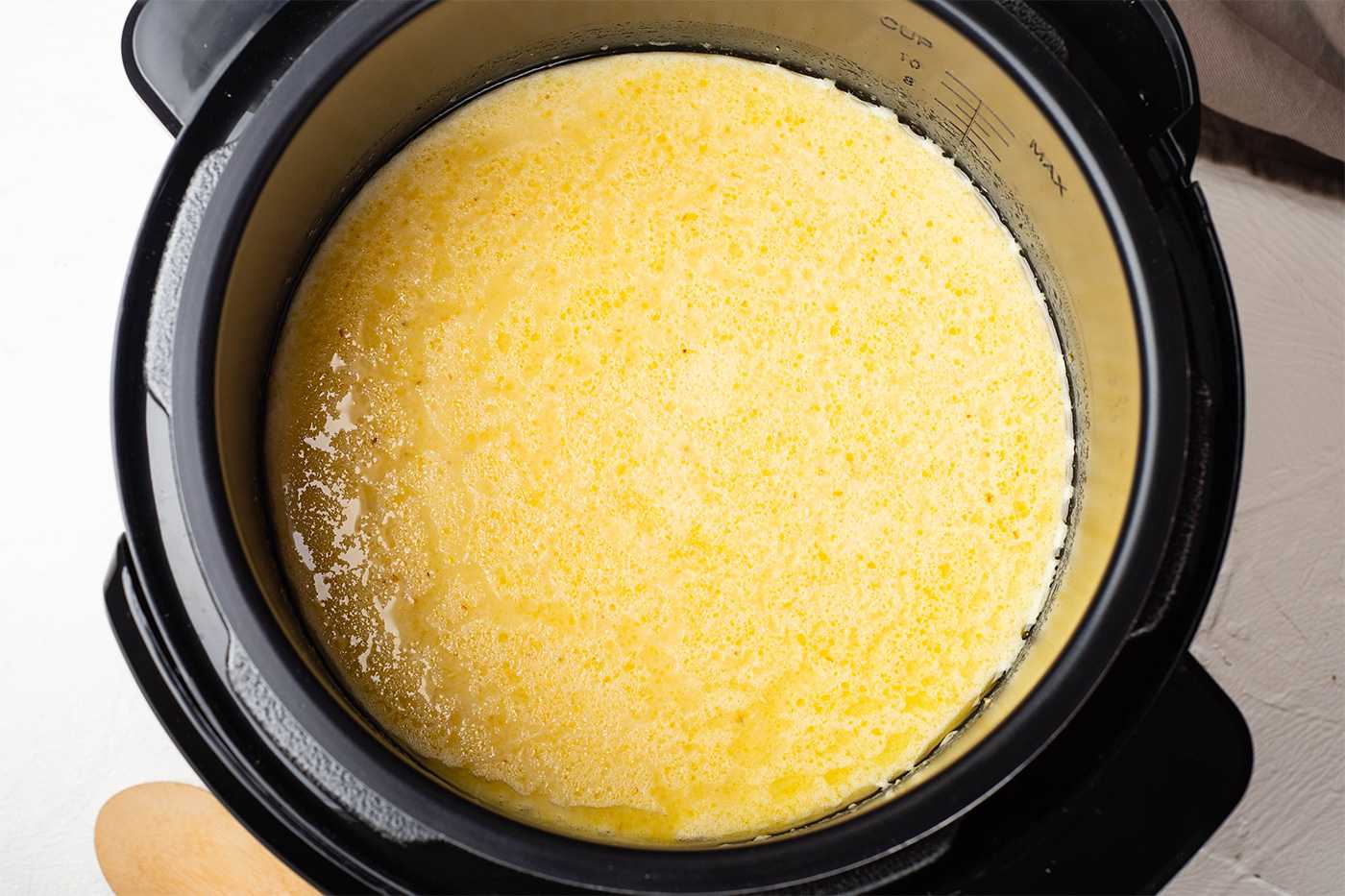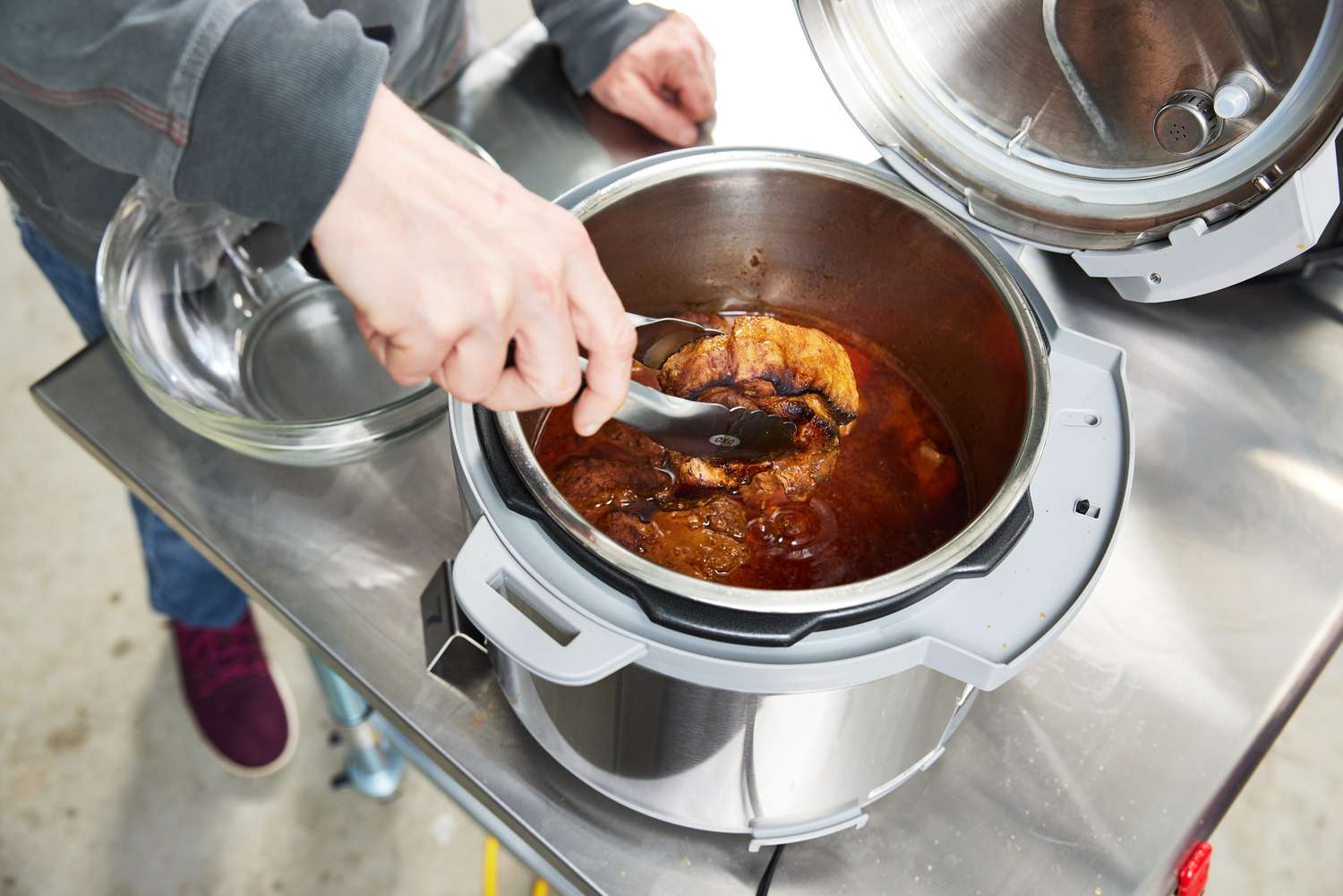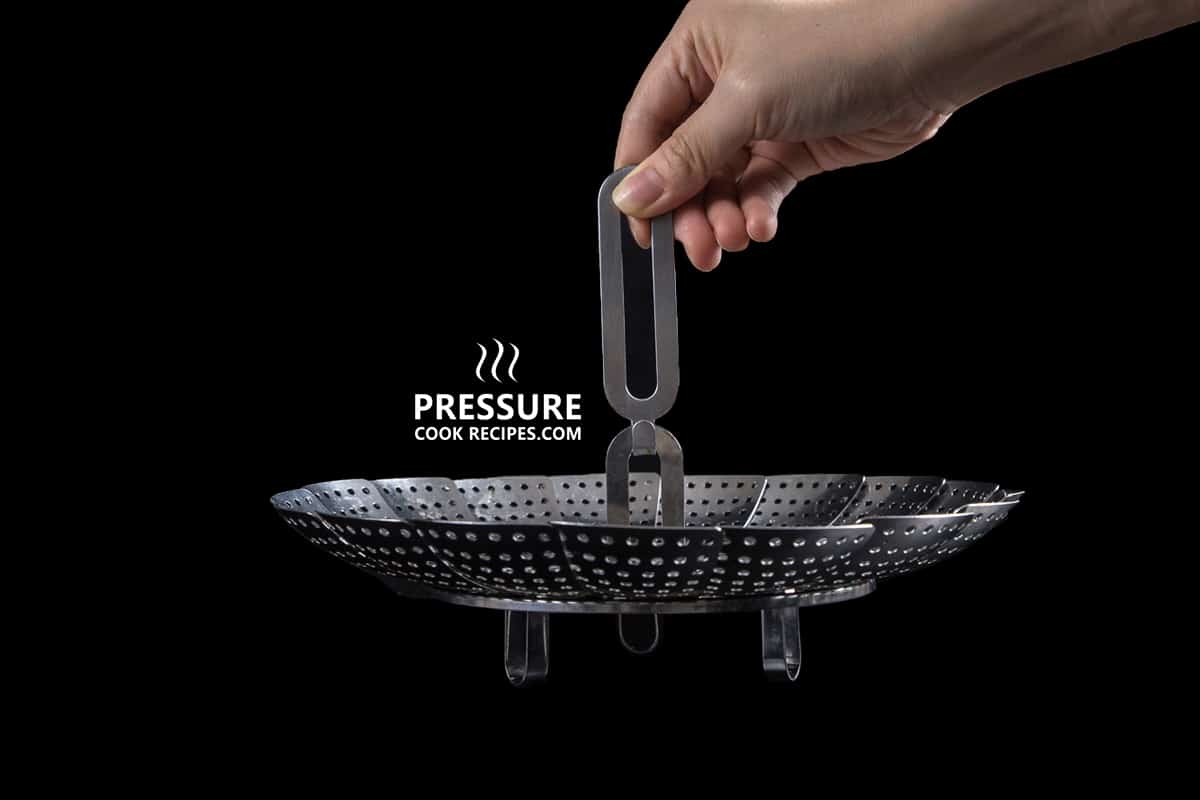Introduction
Welcome to the world of baking with an electric pressure cooker! While pressure cookers are typically known for their ability to quickly cook meals, they can also be used to bake delicious cakes. Whether you’re a seasoned baker or just starting out, learning how to bake a cake in an electric pressure cooker opens up a whole new realm of possibilities in your culinary adventures.
Electric pressure cookers, also known as multi-cookers, have become increasingly popular in recent years due to their versatility. These appliances not only offer the convenience of quickly cooking meals under pressure, but they also have a built-in baking function that allows you to bake cakes, breads, and other desserts.
Using an electric pressure cooker to bake a cake offers several advantages. First, it saves time by reducing the baking time compared to traditional ovens. The pressurized environment in the cooker allows for faster and more even baking. Second, the moist heat inside the pressure cooker helps create a moist and tender cake. The sealed environment prevents the cake from drying out, resulting in a soft and flavorful dessert. Lastly, an electric pressure cooker is a versatile tool that can be used for both savory and sweet cooking, maximizing its usefulness in the kitchen.
In this article, we will guide you step-by-step through the process of baking a cake in an electric pressure cooker. We will provide tips and tricks to ensure successful results, as well as highlight common mistakes to avoid. So, let’s get started on your journey to becoming a master baker with your electric pressure cooker!
What is an Electric Pressure Cooker?
An electric pressure cooker is a kitchen appliance that combines the functionalities of a pressure cooker, slow cooker, rice cooker, and more. It is a versatile appliance that has gained immense popularity in recent years due to its convenience and time-saving features.
Unlike traditional stovetop pressure cookers, electric pressure cookers are designed to be user-friendly, with programmable settings and built-in safety features. They operate by heating the cooking chamber and trapping steam inside, creating a high-pressure environment that speeds up the cooking process.
One of the key advantages of an electric pressure cooker is its ability to cook food quickly. The pressurized environment inside the cooker raises the boiling point of water, allowing ingredients to cook faster. This can significantly reduce cooking times, making it ideal for busy individuals who want to prepare meals in a short amount of time.
Electric pressure cookers also offer the convenience of set-it-and-forget-it cooking. Once you’ve added your ingredients and set the desired cooking time and pressure level, the cooker will take care of the rest. It will automatically control the heat and pressure, ensuring that your food is cooked to perfection without the need for constant monitoring.
In addition to pressure cooking, electric pressure cookers often have other cooking functions such as sautéing, steaming, slow cooking, and even baking. This versatility makes them a valuable addition to any kitchen, providing a wide range of cooking options in a single appliance.
Electric pressure cookers are equipped with safety features to prevent accidents and ensure worry-free cooking. These features include pressure release valves, locking lids, and sensors that monitor and regulate the pressure inside the cooker. They are designed to prevent the pressure from building up too high, minimizing the risk of explosions or other safety hazards.
Overall, an electric pressure cooker is a versatile and efficient appliance that can significantly simplify the cooking process. Its ability to cook food quickly, the variety of cooking functions it offers, and the built-in safety features make it a valuable tool in any kitchen.
Baking Basics in an Electric Pressure Cooker
Baking in an electric pressure cooker is slightly different from baking in a conventional oven. Understanding the basics of baking in an electric pressure cooker will help you achieve great results every time. Here are some key points to keep in mind:
- Prepare the Pressure Cooker: Before you start baking, ensure that the pressure cooker is clean and in good working condition. Check the sealing ring and the pressure release valve to make sure they are intact and functioning properly.
- Use a Suitable Pan: Select a baking pan that fits well inside your electric pressure cooker. Ideally, use a round or square pan that is made of heat-resistant materials like stainless steel or aluminum. Avoid pans with a non-stick coating, as they may peel or warp under pressure.
- Add Water: When baking in an electric pressure cooker, it is essential to add water to the cooking chamber. This creates steam, which helps in maintaining the required moisture during the baking process. Most electric pressure cookers require around 1 to 2 cups of water, but always refer to your specific model’s instructions.
- Place a Trivet: To ensure the cake does not come in direct contact with the water, place a heat-resistant trivet or a sling at the bottom of the pressure cooker. This elevates the cake pan and prevents it from getting submerged in water.
- Control the Pressure: Unlike traditional baking where the temperature is adjusted, baking in an electric pressure cooker involves cooking under pressure. Follow your recipe’s instructions for the recommended pressure level, typically high pressure. The cooking time may be slightly shorter than conventional baking times due to the pressure.
- Allow for Natural Pressure Release: Once the baking time is complete, allow the pressure cooker to naturally release the pressure before opening the lid. This helps to prevent sudden changes in temperature, which can affect the texture and quality of the cake.
By following these baking basics, you’ll be well on your way to baking delicious cakes in your electric pressure cooker. Remember to always read and follow the specific instructions for your pressure cooker model and the recipe you’re using, as they may have slight variations in cooking times and settings. Now that you have the fundamentals down, let’s move on to the step-by-step guide for baking a cake in an electric pressure cooker.
Step-by-step Guide to Baking a Cake in an Electric Pressure Cooker
Baking a cake in an electric pressure cooker is a straightforward process. Follow this step-by-step guide to achieve a moist and delicious cake:
- Prepare the Recipe: Choose a cake recipe that is suitable for baking in an electric pressure cooker. Look for recipes specifically developed for pressure cooking or adjust traditional recipes to accommodate the pressure cooking method.
- Preheat the Pressure Cooker: Turn on your electric pressure cooker and select the baking function, if available. Preheat the cooker for a few minutes while preparing the cake batter.
- Grease the Cake Pan: Grease the baking pan with cooking spray or butter and dust it lightly with flour. Ensure that the pan is well-coated to prevent the cake from sticking to the sides.
- Prepare the Cake Batter: Follow the recipe instructions to prepare the cake batter. Mix the ingredients thoroughly, but be careful not to overmix as it can result in a dense cake. Pour the batter into the greased cake pan, leaving some room for the cake to rise during baking.
- Add Water to the Pressure Cooker: Pour the required amount of water into the cooking chamber of the pressure cooker. This will create steam to bake the cake. The specific amount of water may vary depending on your pressure cooker model, so refer to the user manual for guidance.
- Place the Cake Pan in the Cooker: Carefully place the greased cake pan on top of a heat-resistant trivet or sling inside the pressure cooker. Ensure that the pan is level and not in contact with the water.
- Set the Cooking Time and Pressure: Close the lid of the pressure cooker securely. Set the cooking time and pressure level as specified in your recipe. Generally, most cake recipes require high pressure and a shorter cooking time compared to traditional baking. Start with the recommended cooking time and make adjustments if needed.
- Start the Cooking Process: Once you’ve set the cooking parameters, start the cooking process. The pressure cooker will build up pressure, and the cake will begin to bake. Avoid opening the lid during cooking, as it can affect the baking process.
- Natural Pressure Release: After the cooking time is complete, allow the pressure cooker to naturally release the pressure. This usually takes about 10 to 15 minutes. Avoid using the quick release method, as it may cause the cake to collapse or become dense.
- Carefully Remove the Cake: Open the lid of the pressure cooker once the pressure has been fully released. Use oven mitts or tongs to lift the cake pan out of the cooker. Place it on a cooling rack and let it cool completely before removing the cake from the pan.
- Decorate and Enjoy: Once the cake has cooled, you can decorate it as desired with frosting, powdered sugar, or fresh fruits. Slice and serve your deliciously baked cake.
Following this step-by-step guide will help you bake a perfect cake in your electric pressure cooker. Experiment with different recipes and flavor combinations to create your own unique cakes. Remember to adjust cooking times and pressure levels based on the specific recipe and your pressure cooker’s capabilities. Happy baking!
Choosing the Right Cake Recipe for an Electric Pressure Cooker
When it comes to choosing a cake recipe for your electric pressure cooker, not all recipes are created equal. Certain types of cakes and specific recipes are better suited for baking in an electric pressure cooker. Here’s what you should consider when selecting the right cake recipe:
- Density and Moisture: Choose cake recipes that have a relatively dense and moist texture. Denser cakes, such as pound cakes, bundt cakes, or sponge cakes, tend to fare well in pressure cooking. These types of cakes can withstand the pressure and retain their texture properly.
- Avoid Delicate Cakes: Delicate cakes with light and fluffy textures, like angel food cakes or chiffon cakes, may not be suitable for baking in an electric pressure cooker. The intense pressure in the cooker could cause these types of cakes to collapse or become dense.
- Sufficient Leavening: Look for recipes that include an adequate amount of leavening agents, such as baking powder or baking soda. These agents help the cake rise and expand during baking, compensating for the lack of air circulation inside the pressure cooker.
- Avoid Excessive Filling: Avoid cake recipes that rely heavily on fillings, such as fruit or cream fillings, as they can interfere with the even baking and pressure cooking process. Focus on recipes that have a more straightforward structure and fewer intricate layers or components.
- Adapt Existing Recipes: If you have a favorite cake recipe that you’d like to bake in your electric pressure cooker, you can try adapting it for pressure cooking. Adjust the baking time and temperature to accommodate the pressure cooking method, and monitor the cake closely to ensure it bakes properly.
- Find Pressure Cooker-Specific Recipes: Many cookbooks and online resources offer dedicated pressure cooker cake recipes. These recipes have been specifically developed and tested for pressure cooking, taking into account factors like cooking time, pressure level, and pan size. Using these recipes can provide reliable and consistent results.
- Consider Flavor Enhancements: Pressure cooking intensifies flavors, so experiment with cake recipes that incorporate rich ingredients like cocoa, coffee, spices, or extracts. These flavor enhancers can add depth and complexity to your baked goods.
By choosing the right cake recipes for your electric pressure cooker, you’ll increase your chances of success and enjoy deliciously baked cakes. It’s also important to follow the recipe instructions and adjust cooking times and pressure levels as needed. With some experimentation and creativity, you’ll discover a wide variety of cakes that can be baked to perfection in your electric pressure cooker.
Tips and Tricks for Successful Cake Baking in an Electric Pressure Cooker
Baking a cake in an electric pressure cooker requires some special considerations to ensure optimal results. Here are some tips and tricks to help you achieve successful cake baking in your pressure cooker:
- Read the Manual: Familiarize yourself with the user manual of your electric pressure cooker. Understand the specific instructions and settings related to the baking function. This will help you make the most of your appliance and avoid any potential issues.
- Use the Right Pan Size: Choose a cake pan that fits well in your pressure cooker and allows for even heat distribution. The pan should not touch the sides or lid of the cooker. Using the correct pan size will ensure that the cake bakes evenly and does not overflow during the cooking process.
- Grease and Flour the Pan: To prevent the cake from sticking to the pan, make sure to thoroughly grease the pan with cooking spray or butter and lightly dust it with flour. This will create a non-stick surface and make it easier to remove the cake after baking.
- Avoid Overfilling: Do not fill the cake pan more than two-thirds full to allow room for the cake to rise during baking. Overfilling can cause the cake to spill over or become dense and unevenly cooked.
- Keep an Eye on Cooking Time: While recipes usually provide a guideline for cooking time, every pressure cooker is slightly different. Keep a close eye on the cake during cooking and be prepared to adjust the cooking time if needed. Undercooking or overcooking the cake can affect its texture and flavor.
- Perform the Toothpick Test: To check for doneness, insert a toothpick into the center of the cake. If it comes out clean or with a few crumbs clinging to it, the cake is done. If the toothpick comes out with wet batter, continue cooking for a few more minutes.
- Allow for Natural Pressure Release: When the cooking time is complete, allow the pressure cooker to naturally release the pressure. This gradual release helps the cake settle and maintain its structure. Avoid using the quick release method, as it can result in an undercooked or collapsed cake.
- Proper Cooling and Storage: After removing the cake from the pressure cooker, let it cool completely on a wire rack before frosting or storing. This allows the cake to set and prevents condensation from forming, which can make the cake soggy.
- Experimentation and Practice: Baking cakes in an electric pressure cooker may require some trial and error. Do not be discouraged if your first attempts are not perfect. Experiment with different recipes, pan sizes, and cooking times to find what works best for you.
- Keep a Baking Journal: Maintain a baking journal where you can record the recipes you’ve tried, along with any adjustments made and the results obtained. This can help you track your progress, make improvements, and replicate successful cakes in the future.
With these helpful tips and tricks, you’ll be on your way to successful cake baking in your electric pressure cooker. Enjoy the process of experimenting with different recipes and techniques, and don’t forget to have fun along the way!
Common Mistakes to Avoid When Baking a Cake in an Electric Pressure Cooker
Baking a cake in an electric pressure cooker can be a bit different from traditional oven baking. To achieve the best results, it’s important to be aware of common mistakes that can occur during the process. By avoiding these mistakes, you can ensure a successful cake baking experience in your pressure cooker:
- Using the Wrong Pan: Using an improper pan size or material can lead to uneven cooking or a collapsed cake. Make sure to use a pan that is suitable for pressure cooking and fits well inside your electric pressure cooker.
- Overfilling the Pan: Overfilling the cake pan can cause the cake to spill over or become dense. Leave enough room for the cake to rise during baking without overflowing the pan.
- Not Greasing and Flouring the Pan: Skipping the step of greasing and flouring the pan can result in a cake that sticks to the pan, making it difficult to remove without ruining its shape.
- Opening the Lid During Cooking: Opening the lid during the cooking process can cause a sudden drop in pressure, resulting in an unevenly baked cake. Avoid the temptation to peek or check on the cake until the cooking time is complete.
- Not Adjusting Cooking Time: Cooking times can vary between different pressure cooker models. Be vigilant and adjust the cooking time as necessary to ensure the cake is properly cooked. Undercooking can result in a gooey center, while overcooking can lead to a dry or burnt cake.
- Rushing Pressure Release: Releasing the pressure too quickly can lead to a collapsed or undercooked cake. Always allow for natural pressure release unless the recipe specifically states otherwise.
- Skipping the Cooling Process: Removing the cake from the pressure cooker immediately after cooking can cause it to become dense or fall apart. Allow the cake to cool in the pan for the specified time, then transfer it to a cooling rack to cool completely before frosting or storing.
- Not Testing for Doneness: Assuming the cake is done without performing a toothpick test can lead to an undercooked or overcooked cake. Always check the doneness by inserting a toothpick into the center of the cake and ensuring it comes out clean or with a few crumbs attached.
- Not Adapting Recipes: Not all cake recipes are suitable for baking in an electric pressure cooker. Some recipes may require adjustments in cooking time, temperature, or ingredients to account for the pressure cooking method.
- Not Learning from Mistakes: Baking in an electric pressure cooker may involve some trial and error. If your first attempt doesn’t turn out as expected, don’t be discouraged. Analyze what went wrong, make adjustments, and learn from your mistakes for future baking endeavors.
By being mindful of these common mistakes and taking the necessary precautions, you can avoid potential pitfalls and bake delicious cakes in your electric pressure cooker. Embrace the learning process and don’t be afraid to experiment to find the perfect combination of recipes, pan sizes, and cooking times for your pressure cooker.
Conclusion
Congratulations! You have now learned the ins and outs of baking a cake in an electric pressure cooker. By following the baking basics, step-by-step guide, and tips and tricks provided in this article, you can confidently embark on your cake baking journey with your pressure cooker. Remember to choose the right cake recipe that suits the pressure cooking method, ensure proper pan size and preparation, and closely monitor cooking time and pressure levels.
With the correct techniques, an electric pressure cooker can be a valuable tool in your kitchen, saving you time and delivering moist and delicious cakes. Don’t be discouraged if your first attempts aren’t perfect. Baking in a pressure cooker may require some trial and error to find the best settings and recipes for your specific model. Keep learning from your mistakes and refining your skills.
So, unleash your creativity in the kitchen, explore different flavors and textures, and enjoy the convenience of baking cakes in your electric pressure cooker. Impress your family and friends with your moist, tender, and perfectly baked cakes. Whether it’s a simple pound cake or an elaborate layered creation, your pressure cooker can turn out amazing desserts that will leave everyone wanting more.
Now, it’s time to put your knowledge into practice and start baking! Have fun experimenting with different recipes, adding your personal touch, and embracing the joy of baking delectable cakes in your electric pressure cooker.







